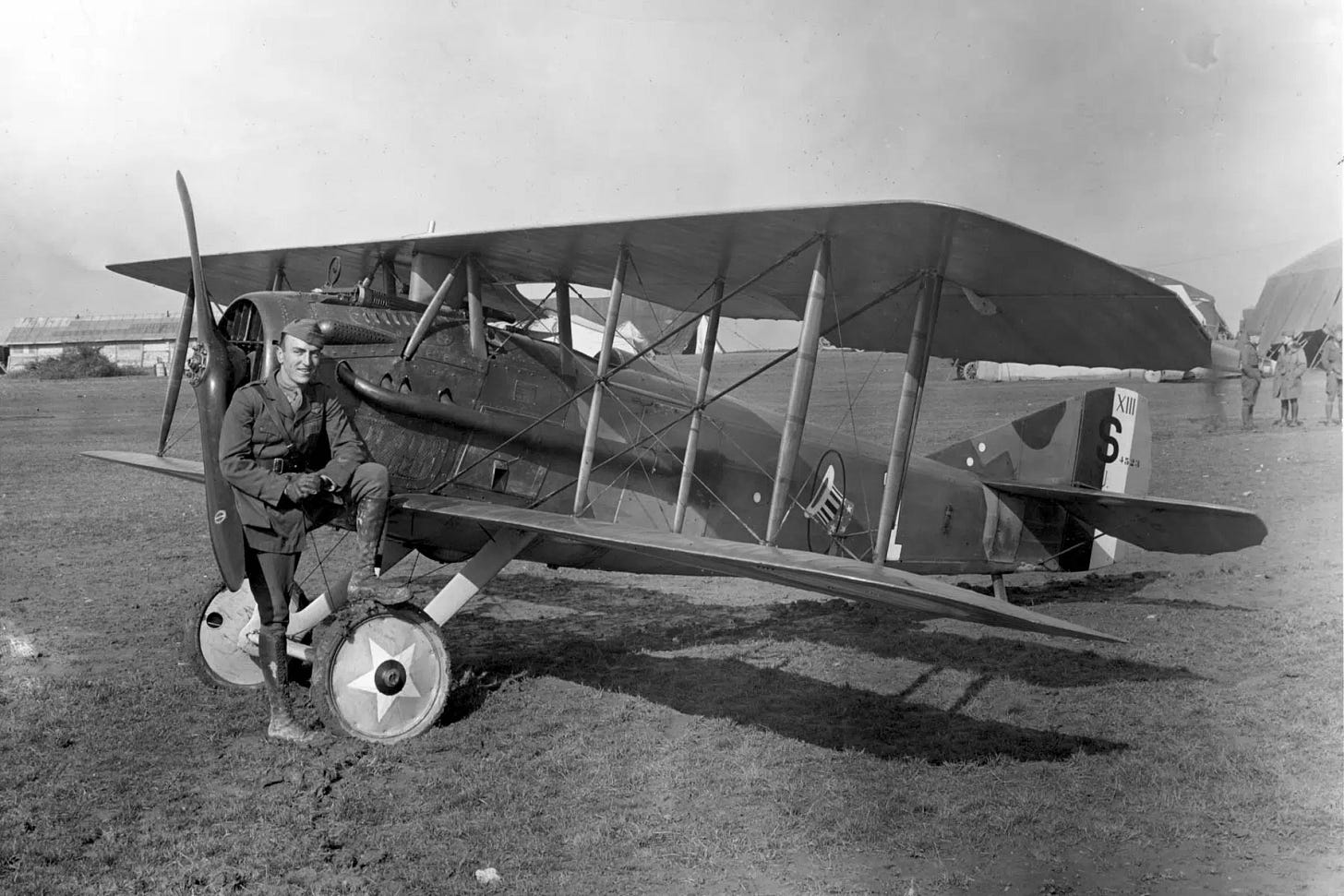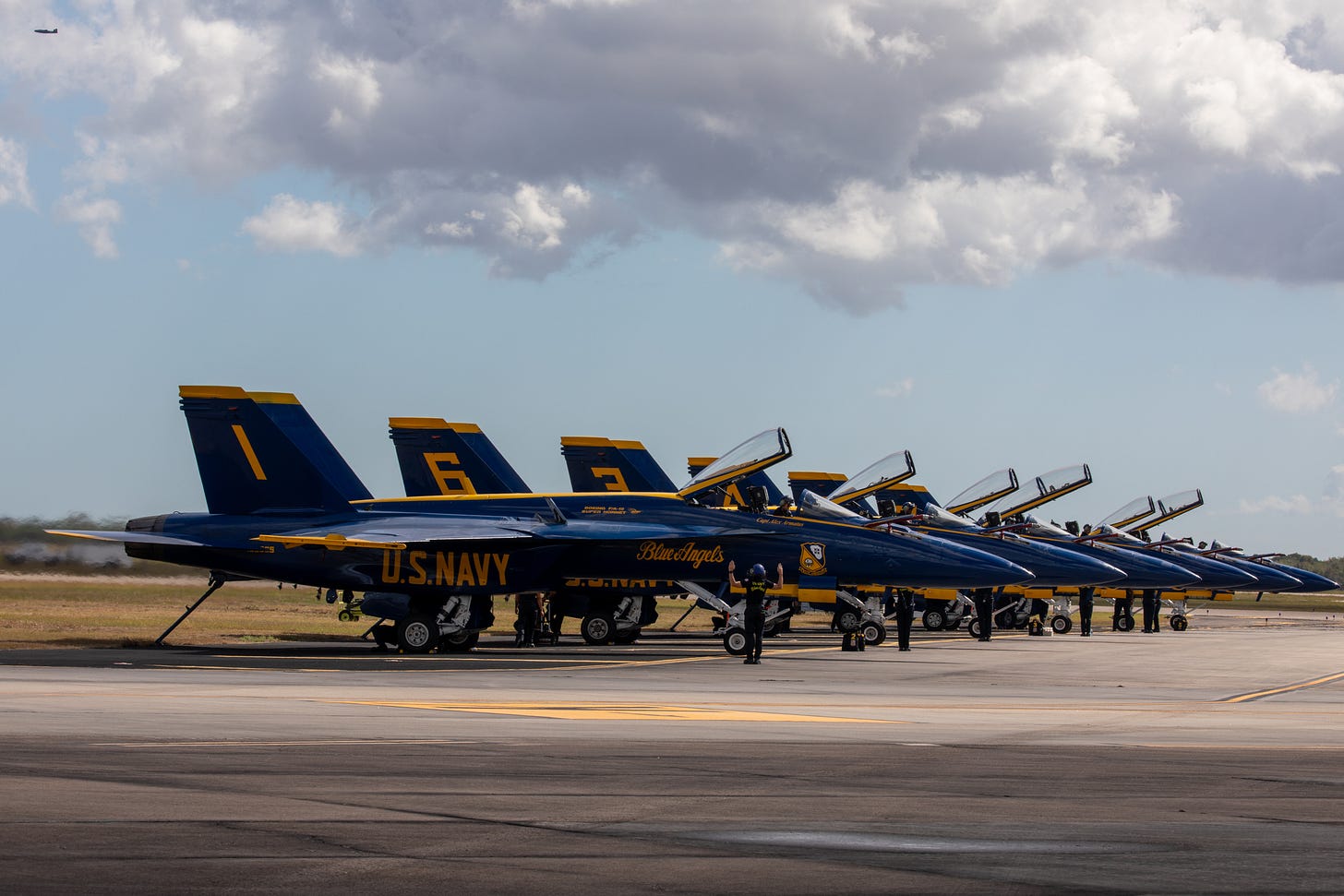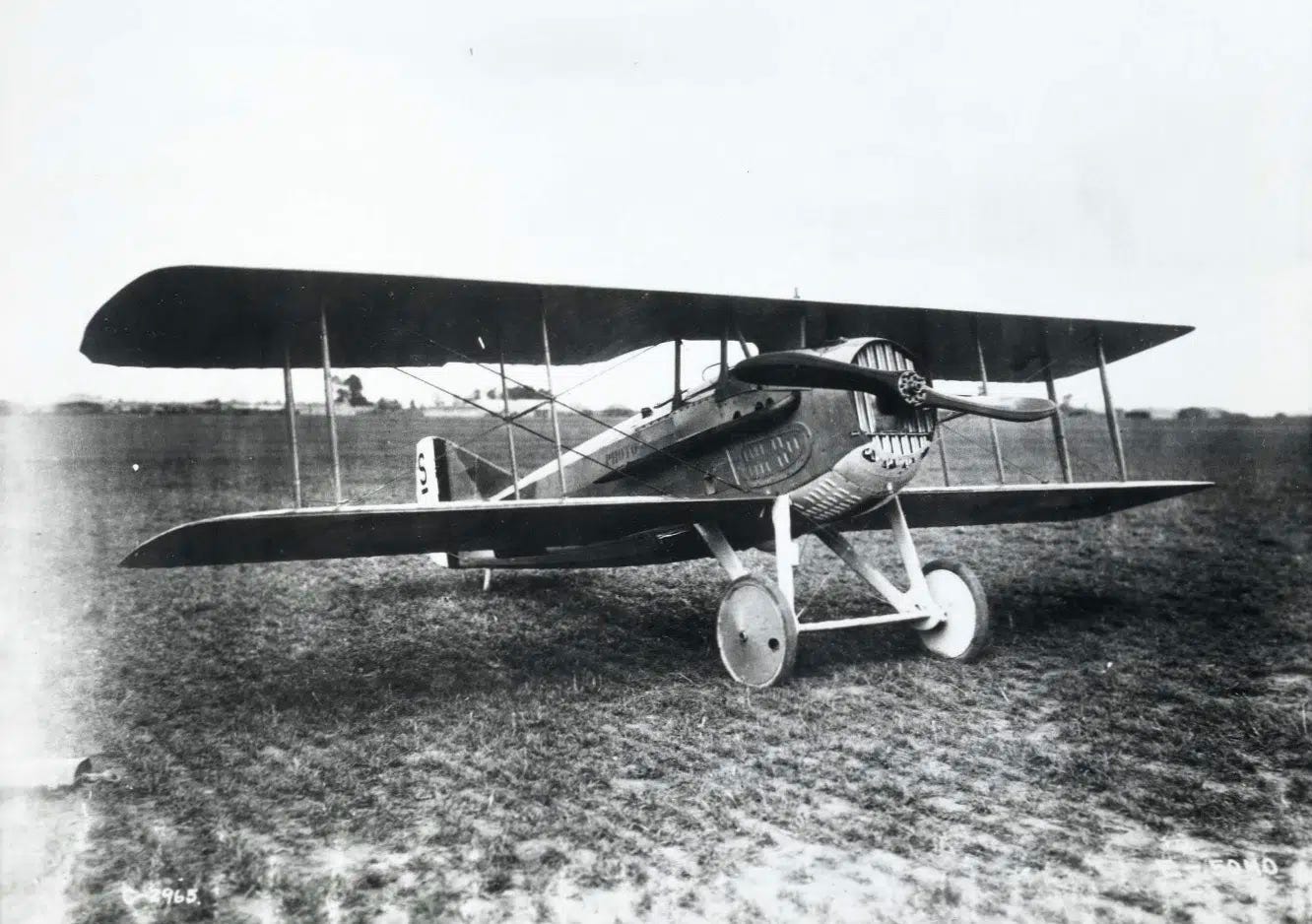A $60 Million Jet Lost to the Sea — and the Rising Battle for the Red Sea
The USS Truman loses a Hornet and looking back on the Spad
"Victory belongs to the most persevering."
– Napoleon Bonaparte
Mission Briefing
Tog here.
Earlier this week, in the tense, contested waters of the Red Sea, the USS Harry S. Truman — one of America’s mightiest aircraft carriers — made a sudden evasive turn under threat of enemy fire.
In the chaos that followed, a U.S. Navy F/A-18E Super Hornet, worth over $60 million, was lost overboard — swallowed by the ocean in a matter of seconds. The sailors towing the aircraft inside the hangar bay fought desperately to save it... but physics and the fury of the sea had other plans.
All personnel survived — one sailor suffered a minor injury — but the incident marks yet another alarming chapter in an increasingly dangerous shadow war off Yemen's shores.
In this week’s video, I break down exactly how this happened, the rising threats U.S. forces are facing in the Red Sea, and the hidden costs — financial and human — that aren’t making the headlines.
But here’s something we didn’t have time to explore in the video:
The long, proud, and battle-tested history of the USS Harry S. Truman.
Commissioned in July 1998, the USS Harry S. Truman (CVN-75) is the eighth Nimitz-class aircraft carrier. Named after the 33rd President of the United States, the ship was designed to be a symbol of forward presence and deterrence — capable of projecting air power anywhere on the globe.
Over its service life, the Truman has participated in some of America’s most critical operations:
Operation Southern Watch, enforcing no-fly zones over Iraq.
Operation Enduring Freedom after 9/11, launching combat sorties into Afghanistan.
Operation Iraqi Freedom, providing critical air support during the invasion of Iraq.
Operation Inherent Resolve, fighting ISIS across Iraq and Syria.
The Truman Strike Group has routinely operated in some of the world’s most volatile regions — the Persian Gulf, the Mediterranean, and now, the increasingly hostile waters of the Red Sea. It's a ship and a crew that know how to operate under pressure — but even the toughest warships are being tested as threats evolve faster than ever.
And the stakes are rising.
In February, the Truman made headlines after colliding with a merchant vessel near Egypt — no injuries, but a wake-up call.
In December, a tragic case of mistaken identity saw an F/A-18 from Truman’s air wing shot down by friendly fire — the USS Gettysburg mistook the Super Hornet for a threat.
Now, this — a lost aircraft during an evasive maneuver against real incoming fire.
This Week's Thought:
The Red Sea isn’t just a shipping route anymore. It's a battlefield.
The Truman Strike Group, like the rest of America's forward-deployed naval forces, isn’t just fighting missiles and drones.
They're fighting exhaustion, pressure, and the invisible war of endurance.
Because sometimes, the real battle isn't just about winning a fight.
It's about surviving long enough to win the next one.
Stay sharp, stay safe — and I’ll see you on deck.
— Tog
Newsletter Bonus Section
Did You Know?
The USS Harry S. Truman's motto is "The Buck Stops Here" — a direct tribute to President Truman's famous phrase. The ship even carries a replica of Truman's iconic desk placard aboard the Captain's quarters.
This Week in Aviation History
27 April 1921 – Flight Tests Complete for the Legendary SPAD S.XIII
On this day in 1921, Louis G. Meister, Chief Test Pilot at McCook Field, completed his official report on one of the most celebrated fighters of World War I — the French-built SPAD S.XIII C.1.
An evolution of the earlier SPAD S.VII, the S.XIII was a single-seat, single-engine biplane made of wood and fabric, reinforced with sheet metal around the engine and cockpit. Designed by Louis Béchéreau and produced by SPAD along with eight other manufacturers, the S.XIII featured a more powerful Hispano-Suiza 8Ba engine that delivered 50 more horsepower than its predecessor. Later versions would adopt the even stronger 8Be engine.
The U.S. Air Service evaluated the SPAD at McCook Field under the designation P-154 - the numbering system was very different then, wasn’t it? Meister’s detailed observations praised the SPAD’s stability in the air and its impressive speed and climb performance, making it one of the fastest and most capable fighters of its era. However, he also noted some quirks: difficult take-offs due to torque swing, heavy tail characteristics in level flight, and a noisy, temperamental engine at higher altitudes. Yet the SPAD was durable, handled rough landings with ease, and offered good maneuverability without a tendency to spin — critical qualities for a wartime fighter.
Built for the "chasseur" role — French for "hunter" — the SPAD’s designation "C.1" indicated it was a single-seat aircraft. It carried two synchronized .303-caliber Vickers machine guns, a major firepower improvement over earlier designs.
Technical Highlights of the SPAD S.XIII C.1:
Engine: Hispano-Suiza 8Ba V8, 150–197 horsepower
Top Speed: 131.5 mph (213 km/h) at 6,500 feet
Service Ceiling: 18,400 feet (5,608 meters)
Climb to 6,500 feet: 6.5 minutes
Armament: Two .303-caliber Vickers machine guns
Dimensions: 26 ft 3¾ in wingspan, 20 ft 4 in length
Construction: Wooden frame with fabric and sheet metal skin
The SPAD S.XIII went on to serve not only France but also the Royal Flying Corps and the U.S. Army Air Service, flown by famous aces like Eddie Rickenbacker. Its ruggedness, speed, and firepower secured its place as one of the most formidable fighters of the Great War—and an important stepping stone in the evolution of military aviation during those interwar years. Now you know!

In Case You Missed It
Looking back on that incident in December:
Photo Outlet
Every issue of Hangar Flying with Tog gets you a free image that I’ve taken at airshows:

Feel free to use these photos however you like, if you choose to tag me, I am @pilotphotog on all social platforms. Thanks!
Post Flight Debrief
Want to keep getting this newsletter straight to your inbox? Just sign up using the form below—it's that easy! This newsletter will always be free for everyone, but if you’d like to support the mission and unlock even more, consider becoming a paid subscriber. Either way, I’m grateful for your support. Sign up now and stay in the loop!
-Tog



